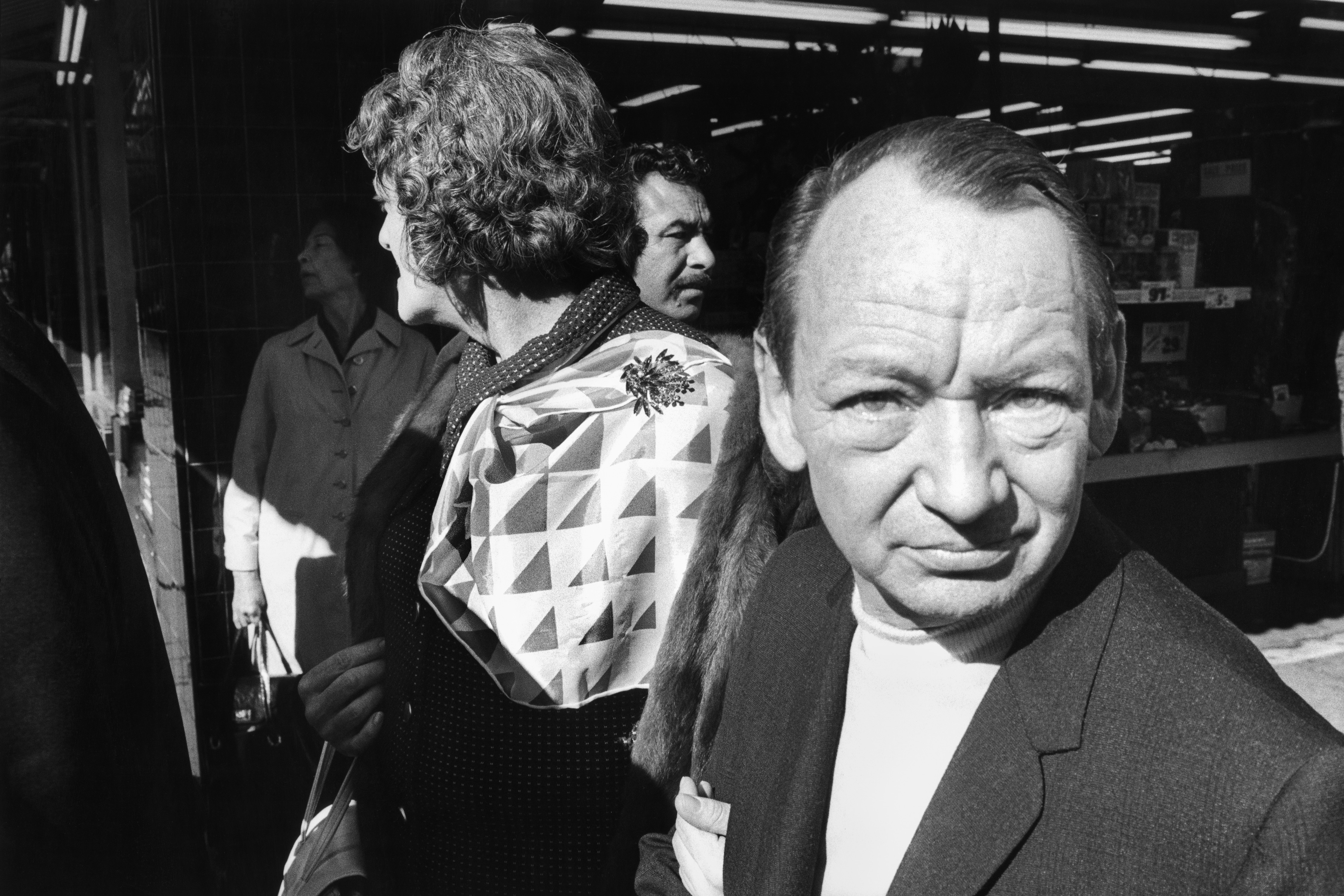
Anthony Hernandez. Los Angeles, 1971. Gelatin silver print. © Anthony Hernandez. Courtesy Galerie Thomas Zander, Cologne.
The art historian and curator Lars Nittve once wrote that Los Angeles is the capital of visuality.1 Indeed, from movie stars and palm trees to surfers and modernist architecture, the city’s glamour outwardly reigns.
Anthony Hernandez, a Los Angeles native, is uninterested in the glamorous. Photographing life on the city’s streets since the 1970s, he is instead captivated by the everyday. He picked up a camera after coming across the work of Edward Weston. Inspired by the master photographer’s clarity of vision, Hernandez began taking photographs in downtown Los Angeles—then purely a space of business—capturing close-ups of people he passed on the street. His black-and-white images are full of people with shocked reactions or unaware that a camera is about to catch their next movement. He liked the idea of working quickly, capturing life as it was, rather than creating formally composed images. Despite his initial inspiration from Weston, Hernandez’s images strongly resonate with the street photography of Robert Frank and Gary Winogrand: catching life in motion, up close and personal.

Anthony Hernandez. Public Transit Areas, 1979. Gelatin silver print. © Anthony Hernandez. Courtesy of Galerie Thomas Zander, Cologne.
Another early series is titled Public Transit Areas. Interested in public space as well as the nonevent, Hernandez set up his camera on a tripod and photographed people waiting at bus stops across Los Angeles. Unlike his earlier works, in this series Hernandez photographs from a distance, with enough space to mark the site but still close enough to capture individual expressions. The series is distinctively L.A. Between style and subject matter, Public Transit Areas merges the straight approach of street photographers with the conceptual mindset of fellow Los Angeles artists such as Ed Ruscha and John Baldessari. Moreover, the images are powerfully imbued with a sense of sprawl and transit that continues to define the city’s urban landscape. The series also importantly reveals images of race and class in 1970s Los Angeles, placing the city’s diversity at the forefront. As viewers examine the various faces captured in Hernandez’s photographs, they are prompted to think about who takes the bus – this mundane action becoming a signifier for a more complex system.

Anthony Hernandez. Landscape for the Homeless, 1989. Gelatin silver print.
© Anthony Hernandez. Courtesy of Galerie Thomas Zander, Cologne.
One of the few L.A. artists to call himself a street photographer, Hernandez continued to photograph people on the city’s sidewalks well into the late 1980s, switching to color film in later years. Constantly evolving in style, technique, and process, he continues to build a body of work that spans subject matter and socio-political themes while staying true to his roots. He has documented vacant homeless encampments in Los Angeles, photographed abandoned buildings in Rome, and created colorful images of abstract landscapes. Prolific in his dedication to the documentary tradition, he is an underrated photography star whose work, both old and new, remains urgently relevant. Consistently privileging the everyday over the glamorous, Anthony Hernandez reminds us that Los Angeles is more than Hollywood, swimming pools, and convertibles: it’s another American city where people wait for the bus.
1. Lars Nittve, “Sunshine and Noir,” in Lars Nittve and Helle Crenzien, Sunshine & Noir: Art in L.A., 1960–1997 (Humlebaek, Denmark: Louisiana Museum of Modern Art, 1997), 7.
The first retrospective of Anthony Hernandez’s work will be on view at San Francisco Museum of Modern Art from September 24, 2016 through January 1, 2017.



